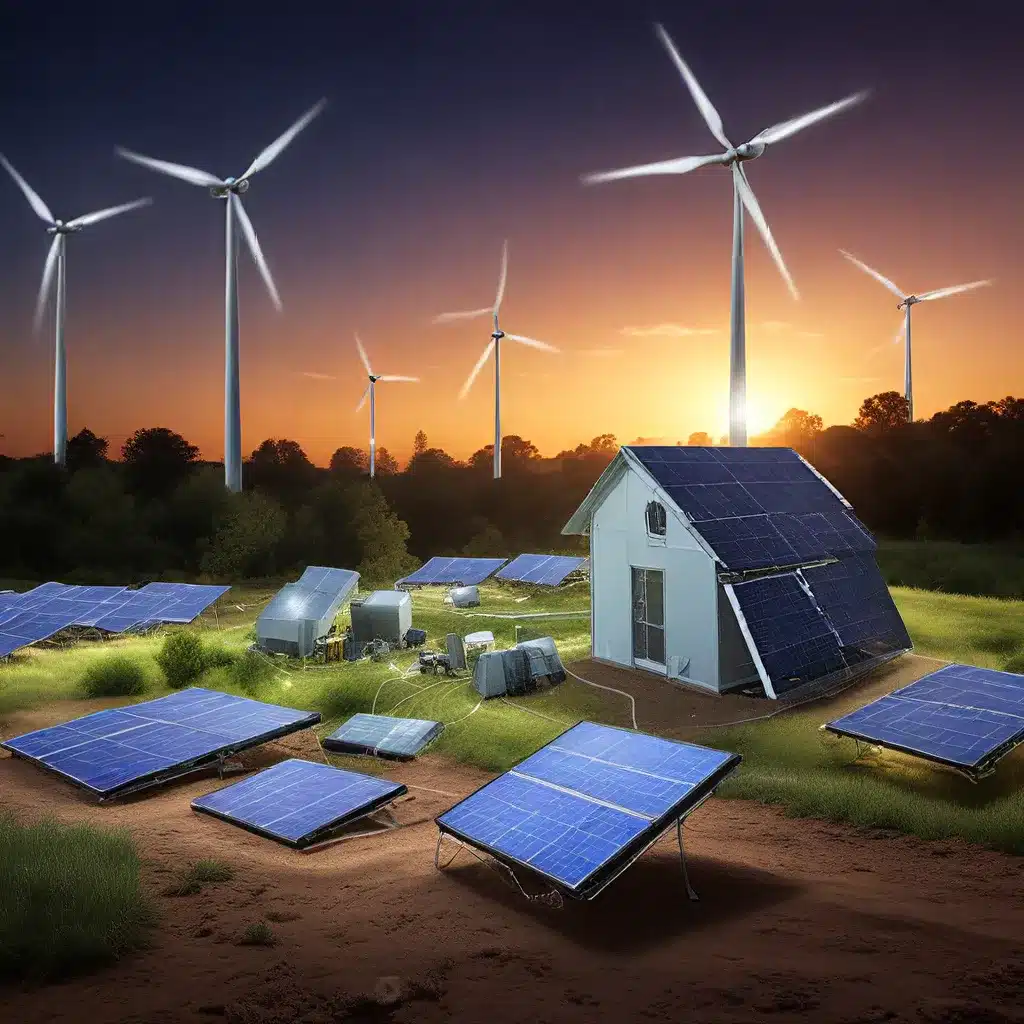
The Promise of Energy Harvesting
In our quest for a sustainable future, the field of energy harvesting has emerged as a promising solution. Also known as power harvesting or energy scavenging, this innovative process enables the derivation of energy from various external sources, such as solar power, thermal energy, wind energy, salinity gradients, and kinetic energy. By harnessing these ambient energy sources, energy harvesting offers a sustainable and environmentally friendly approach to powering small, wireless, autonomous devices.
Energy harvesters act as a bridge between the ambient energy sources and the power requirements of low-energy electronics. Unlike traditional energy generation methods that rely on finite resources such as oil or coal, energy harvesting taps into the abundance of energy present in our environment. For example, temperature gradients resulting from the operation of a combustion engine or the electromagnetic energy in urban areas from radio and television broadcasting can serve as potential energy sources for harvesters.
Harvesting Sustainable Energy: Unlocking the Power of Energy Scavenging
Challenges and Advancements in Energy Harvesting
While energy harvesting presents exciting opportunities, it is not without its challenges. The amount of power harvested from ambient energy sources is relatively small, which limits the energy available for low-energy electronics. Additionally, optimizing the efficiency of energy harvesters and integrating them seamlessly into various devices require further research and development. However, ongoing advancements in materials science, electronics, and nanotechnology hold great promise for the future of energy harvesting.
Researchers are exploring innovative materials and designs to improve the efficiency of harvesters, enabling the capture of even small amounts of energy. Furthermore, the integration of energy storage technologies like advanced batteries or supercapacitors can help address the intermittent nature of ambient energy sources. By combining energy harvesting and storage, sensor networks can operate more reliably and autonomously, reducing the need for frequent battery replacements or external power sources.
Being a World-Class Energy Services Provider
Transformative Impact of Energy Harvesting
Energy harvesting has emerged as a sustainable path towards powering the future. By utilizing ambient energy sources and converting them into usable electricity, energy harvesters enable the operation of small, wireless, autonomous devices in various applications. From wearable electronics to condition monitoring and wireless sensor networks, energy harvesting offers a greener, more efficient, and cost-effective alternative to traditional power sources.
As we continue to innovate and refine energy harvesting technologies, we move closer to a future where sustainable energy solutions are at the forefront of our power systems. The integration of energy harvesting and storage systems can revolutionize the way we power sensor networks and IoT devices, contributing to a more sustainable and autonomous future.
Sensor Networks and IoT: Powering the Future
Sensor Networks and Energy Efficiency
Sensor networks play a crucial role in a wide range of applications, from environmental monitoring and industrial automation to smart cities and healthcare. However, the energy consumption of these networks is a critical consideration, as it directly impacts their deployment, scalability, and operational longevity.
Traditional sensor networks often rely on battery-powered nodes, which require periodic maintenance and replacement, increasing the overall cost and complexity of the system. Energy harvesting technologies offer a viable solution to this challenge by enabling sensor nodes to derive power from their surrounding environment, reducing or eliminating the need for external power sources.
By leveraging energy harvesting, sensor network designers can develop more sustainable and autonomous systems that operate with minimal human intervention. This not only enhances the reliability and resilience of the network but also opens up new opportunities for deployment in remote or hard-to-reach locations, where traditional power sources may be scarce or inaccessible.
Security Considerations in Sensor Networks and IoT
As sensor networks and IoT devices become increasingly prevalent, the importance of cybersecurity cannot be overstated. These systems often collect and transmit sensitive data, making them potential targets for malicious actors. Energy harvesting, coupled with robust security protocols, can play a crucial role in safeguarding these networks.
Energy-efficient sensor nodes powered by energy harvesting techniques are less vulnerable to power-based attacks, such as denial-of-service (DoS) attempts that aim to deplete the node’s energy reserves. By reducing the reliance on batteries or external power sources, energy harvesting can enhance the overall resilience of the network, making it more difficult for attackers to disrupt its operations.
Furthermore, the integration of energy storage technologies, such as advanced batteries or supercapacitors, can provide a buffer against intermittent energy sources, ensuring that sensor nodes maintain adequate power for security-critical functions, such as encryption, authentication, and secure communication protocols.
The Future of Sensor Networks and Energy Management
As the demand for smart and connected systems continues to grow, the role of sensor networks and IoT devices will become increasingly crucial. Energy harvesting and storage technologies are poised to play a pivotal role in shaping the future of these networks, driving towards greater sustainability, autonomy, and security.
Through ongoing research and development, we can expect to see further advancements in the efficiency and integration of energy harvesting solutions, enabling sensor nodes to operate more reliably and with longer lifespans. The combination of energy harvesting, energy storage, and intelligent power management strategies will be instrumental in creating a future where sensor networks and IoT devices are seamlessly integrated into our daily lives, contributing to a more sustainable and connected world.
Being a World-Class Energy Services Provider
As we continue to push the boundaries of sensor network technology, the promise of energy harvesting remains a key driver for innovation, paving the way for a future where sustainable and autonomous systems shape the way we interact with our environment and each other.